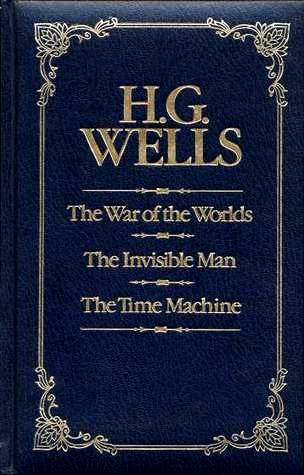
The Invisible Man
Book Description
Invisible and unhinged, a man haunted by the power of his own invention turns a small village upside down. As he grapples with the terrifying consequences of his newfound ability, paranoia, obsession, and madness weave a dark narrative that leads to chaos. Alliances fracture, and trust crumbles as fear grips the townsfolk. Will anyone confront the unseen menace lurking in the shadows before it’s too late? In a battle between humanity and absolute power, can one man’s descent into invisibility uncover the true nature of existence? Will they learn that some horrors are better left unseen?
Quick Book Summary
"The Invisible Man," written by H.G. Wells, follows the story of Griffin, a gifted yet troubled scientist who discovers the secret to invisibility. Driven by ambition, Griffin tests his formula on himself, only to realize his irreversible condition wreaks havoc on his psyche. His quest to control and profit from his invention soon mutates into a dangerous obsession, leading to violence and escalating conflict in a quiet English village. As paranoia and distrust grip the community, Griffin’s isolation deepens, and he becomes increasingly ruthless in his attempts to impose his will. The novel explores the destructive power of unchecked ambition and the isolation caused by both physical and emotional invisibility, ending in tragedy as Griffin’s humanity is consumed by his creation.
Summary of Key Ideas
Table of Contents
The Corrupting Nature of Power
H.G. Wells’ "The Invisible Man" centers on Griffin, an ambitious scientist obsessed with unlocking the secrets of visibility. Griffin’s initial intentions are driven by personal gain rather than altruism. Once he achieves invisibility, Griffin is forced to abandon his former life, as his extraordinary condition proves more a curse than a victory. He becomes isolated, both physically and emotionally, and flees to the village of Iping, where his erratic behavior immediately arouses suspicion.
Isolation and Alienation
The reaction of the village to Griffin’s presence sets off a wave of panic, fear, and hostility. The community’s inability to understand or control the invisible threat he poses leads to escalating paranoia and distrust among its members. Griffin’s attempts to explain his situation are thwarted by his growing irritation and alienation, and the villagers’ mounting fear turns quickly to mob mentality, illuminating how easily a community can fracture under the strain of the unknown.
The Ethics of Scientific Discovery
As Griffin’s alienation increases, so does his descent into madness. His frustration with the limits imposed by his condition and society’s rejection fuels a violent desire for power. Griffin rationalizes theft, coercion, and ultimately murder, believing these acts necessary for survival and revenge. His actions reveal the corrupting influence of unchecked power and the catastrophic consequences when ethical boundaries are discarded in scientific endeavor.
Fear and Social Breakdown
The story also explores the moral responsibility of scientists and the consequences of blind ambition. Griffin’s refusal to consider the ethical ramifications of his work and his cold detachment from the suffering he causes expose the dangers inherent in pursuing knowledge for its own sake. Wells warns of the perils of playing god, especially when the pursuit of innovation is divorced from morality and compassion.
Madness and Obsession
The tale concludes with Griffin’s demise at the hands of those he terrorized. He is ultimately betrayed by even his few remaining allies and brutally killed, his invisible body only revealed in death. Through this tragic conclusion, Wells reflects on themes of obsession, alienation, and the human need for connection, suggesting that true horror lies not in invisibility itself, but in the dangers of unchecked ambition and the loss of humanity.
Download This Summary
Get a free PDF of this summary instantly — no email required.





